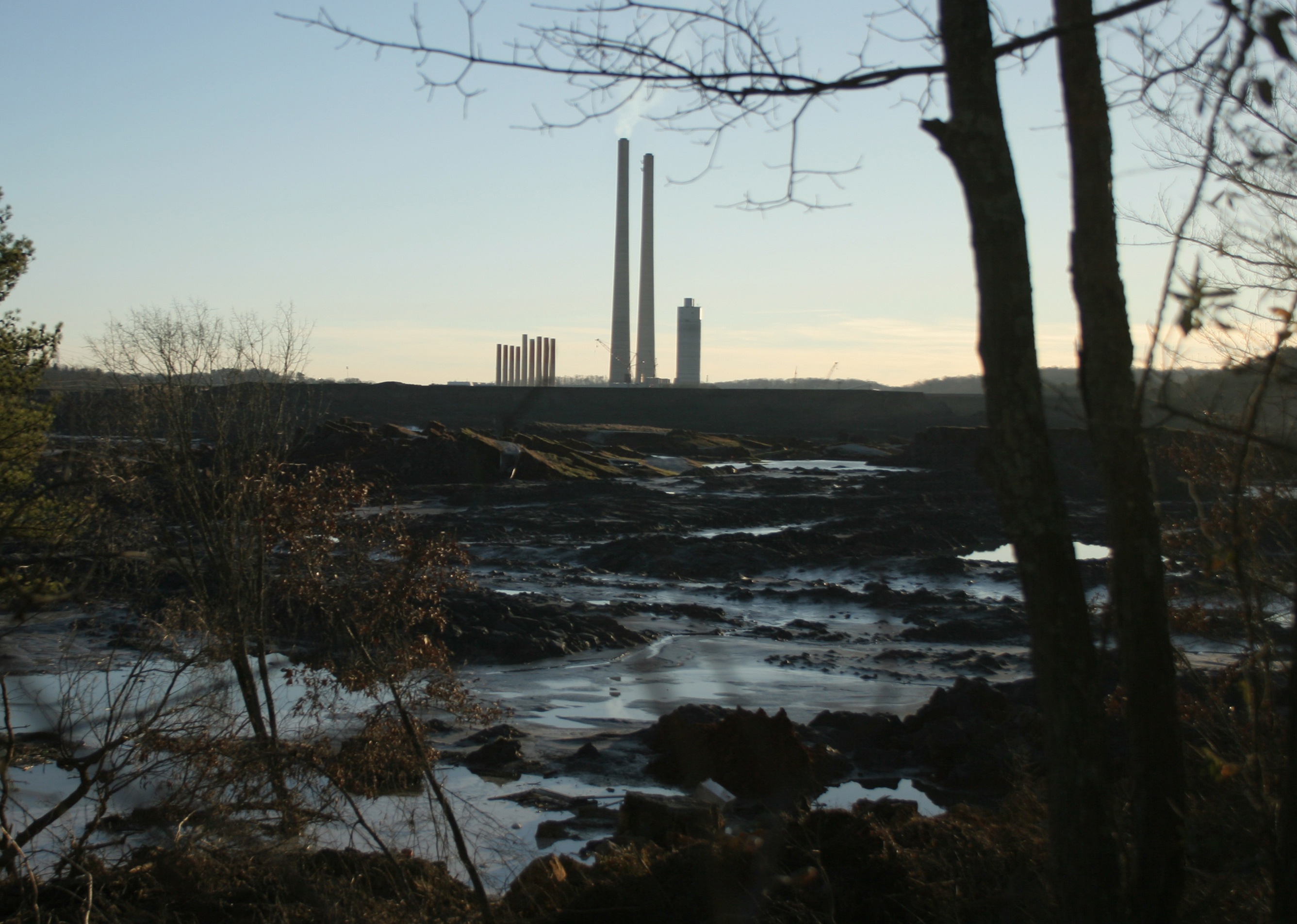Five years ago this week, the residents of the Swan Pond community just behind TVA's Kingston coal plant in Harriman, Tenn., were spending Christmas picking their way carefully around flows of coal ash.
Just after midnight on Dec. 22, 2008, the 50-plus-year-old coal tar landfill - a man-made and mounded lake of waste from burning coal to make electricity - broke through an earthen dam wall and more than 1 billion gallons of toxics-laden sludge oozed out over 400 acres to obliterate a finger of the Emory River, destroy three houses and make about 300 more unlivable.
The Tennessee Valley Authority is still cleaning the mess up. The disaster - which TVA did finally acknowledge was "a disaster" - was 10 times the size of the Exxon Valdez oil spill and focused national attention on the largely hidden problem of coal ash.
About half of the nation's power plants burn coal. But those plants also produce about 130 million tons of coal waste each year. Most of the waste is stored in decades-old, unlined pits or man-made mounds much like the one in Harriman. Many scientists and environmental groups say the danger from those pits leaking into groundwater or rivers is real and sobering.
But the dangers don't stop with water. In Harriman, the spilled ash couldn't be allowed to dry out. If it did, microscopic pieces of silica posed a breathing threat. EPA instituted water-down requirements and TVA sprayed the enormous cleanup site with a combination of grass seed and a crusting agent - over and over again for five years as earth movers scooped up ash and stored it in new sites on TVA land until it could be hauled by rail to an Alabama landfill or returned to the rebuilt waste landfill behind the Kingston plant.
Amazingly, both TVA and the U.S. Environmental Protection Agency told the townspeople and workers there was no need to wear masks. The ash had to be kept from drying and blowing, but there was no danger to workers and residents, they said.
Really?
Now a group of contract workers have sued, claiming respiratory problems. Some residents sued, too, for the loss of their homes and land values. The public utility eventually bought out most properties in the community and the land is being turned into a public park. The soil from the community's largest farm is being used to cap and sod the cleanup area. TVA - under EPA oversight - built miles of nesting walls to surround the reformed landfill.
Cost in dollars? About $1.2 billion, paid for by ratepayers. TVA has received almost $250 million in insurance coverage benefits and expects about $50 million more, according to officials. But some 63 lawsuits against TVA still are pending in federal court. Cleanup will continue until 2015. Beyond cleanup costs, the incident prompted TVA to convert its remaining wet ash storage facilities to dry ash storage. That conversion, according to TVA financial reports, is projected to cost another $1.5 billion to $2 billion.
But perhaps the biggest failure has not been the landfill, or TVA's long-term maintenance of it before the disaster. The biggest failure has been in EPA's policy making - or the lack of it - and congressional meddling.
Each waste site - and there are hundreds - essentially has no rules except what states impose to meet overarching federal water and land-protection laws. Officials with EPA have known this was a problem, and the agency began looking at a coal waste policy in 2000 - eight years before the Kingston ash spill happened.
In the year following the Kingston spill, there were two more publicized spills - one at Widow's Creek in Alabama and another in Maryland. Finally, in December 2009, EPA revealed the previously secret locations of 44 "high hazard" coal ash embankments, but delayed what would have been its first federal rule for disposing of ash, according to a timeline prepared by Appalachian Voices, an environmental group that follows coal issues.
In 2010, EPA issued a draft coal ash rule that quickly garnered 450,000 comments. Instead of acting, EPA twice reopened the normally 90-day public comment period, once later in 2010, largely under pressure from industry, and again in 2011 - just about the time a coal ash embankment broke and spilled into Lake Michigan. By that time, EPA had tripled the number of ash ponds on it's "high hazard" list.
But in 2011, the U.S. House of Representatives passed a bill to strip EPA of authority to regulate coal ash disposal. In December that year, EPA's list of sites contaminated by coal ash reached 157.
In 2012, the draft coal ash rule was sent to the Office of Management and Budget. It's still there.
Meanwhile, EPA has revealed the existence of 451 more coal ash dumps, bringing the total to 1,161. Nearly half are unlined, meaning there's a good chance the sites have or are contaminating ground water.
In July, the U.S. House passed another bill that would prevent EPA from regulating coal ash.
And on Dec. 6, EPA put the coal ash rule on it's "long-term action" list.
Merry Christmas, Americans. Have a lump of coal.

